Just after school let out this June we welcomed a new four-legged member of the family. This was Penny the day we adopted her…
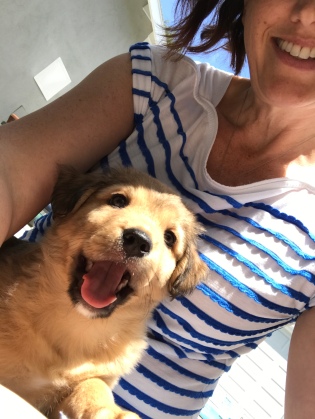
Me and Penny adoption day
Penny is now an almost 5-month-old Shepherd mix (mom was a 50 lb Shepherd mix and dad was who-knows-what). She is practically perfect in every way and is probably the cutest, smartest puppy in the world (or at least as far as our little family’s world is concerned) and like all new puppy parents, I want to give her the best start in life. That means taking her for regular check-ups, making sure she is socialized (once fully vaccinated) and learns good canine citizen skills, brushing her teeth daily, and feeding her a good quality food for her breed combination and life-stage.
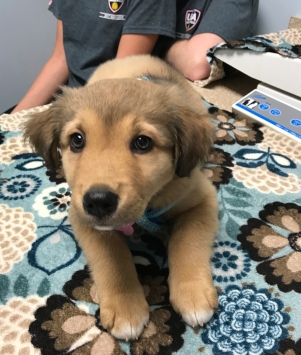
Penny’s First Vet Visit
Penny got her puppy check-up and vaccines with a veterinarian other than me (it has been a few years since I’ve been in a General Practice setting so I defer to the GP experts to help me keep her healthy), we picked up a few puppy and dog training books months ago (in anticipation of adding a puppy to the mix), and our new GP showed the kids how to start brushing Penny’s teeth (more info at avdc.org ) so we are off to a good start. My specialty training in nutrition so I feel pretty comfortable making diet decisions for her on my own, but with so much conflicting and sometimes questionable recommendations out there I wanted to put together a list of what I am calling “Weeth’s Top Tips” to help you keep your very own pup healthy and happy for years to come whether you have a recent addition or a stable pack.
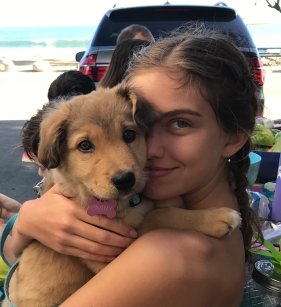
Penny’s First Trip to the Beach
Weeth’s Top Tip #1: Feed Puppies Puppy Food
I know it sounds pretty obvious, but make sure the diet you are feeding to your new puppy is designed and formulated for feeding to puppies. I’ve seen rescue groups, breeders, and online personalities recommend feeding adult dog food to “slow” the puppy’s growth. Don’t do this. Puppies have higher requirements for just about every essential nutrient (protein, essential fatty acids, vitamins, and minerals) so we want to make sure we give them the right start in life. “Slowing” a puppy’s growth by feeding an adult maintenance food is called “malnutrition”.
Weeth’s Top Tip #2: Check Your Labels
Commercial pet foods no matter the size of manufacturer are required by law to have a Feeding Statement on the label that indicated that the diet is either “complete and balanced”, “intermittent or supplemental feeding only”, or “use as a treat”. More on labels can be found here and here. You want a diet that is labeled to have specifically been formulated or undergone feeding trials either for “growth and maintenance” or “all life stages”. If there is no Feeding Statement at all on the label put it down and walk away. This is technically an illegal label, and if the company marketing the food doesn’t know basic label requirements what else don’t they know? If it is labeled for “intermittent feeding” or as a “treat” then only give it intermittently or as a treat making up less than 10% of your puppy/dog’s daily calorie intake. If the Feeding Statement says “for adult maintenance only” wait until your puppy is at least 80% of their adult size to transition to this food.
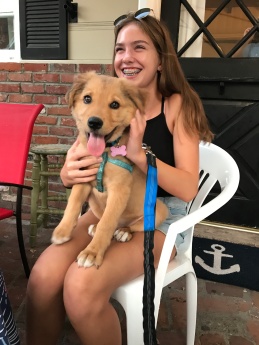
Bigger, but still not big enough for adult dog food.
Weeth’s Top Tip #3: Feed for Your Breed
Always, and I mean always, feed your large or giant breed puppy a diet developed specifically for large or giant breed puppies. The level of calories, calcium (an essential mineral necessary for bone growth among other things), and the calcium-to-phosphorus ratio (the level of these two essential minerals relative to one another) should be controlled in the diet for large and giant rapidly growing dogs. Overnutrition (i.e., overfeeding) and excess calcium intake don’t typically cause developmental bone and joint disease in small and medium breeds (though excess calories can still lead to obesity and joint disease down the line), but these can be a serious health risk in large and giant breed growing puppies. If large and giant breed puppies are overfed and grow too quickly their bones and joints can’t physically keep up; too little calcium and the bones become weak and fragile and can break as the puppy grows and jumps around as puppies do; too much calcium and the extra is deposited in the bone preventing normal remodeling and bone growth. This is partially related to their physical size (larger puppies have more mechanical force on their developing bones and joints) as well as how much time they spend in the active “puppy growth” phase. A small breed dog with an expected adult size of less than 20 lb will reach 80% of its expected adult size by about 9 months of age, whereas in a large breed puppy with an adult size of 55-90 lb it is closer to 12 months, and a giant breed (90 lb+) may not reach 80% of its adult size until closer to 15-18 months of age. More months of growth means more months where things could go wrong if the diet isn’t balanced for their needs.
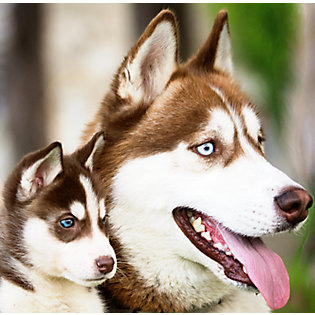
Feed for breed and life-stage
Weeth’s Top Tip #4: Feed for Body Condition
All puppies go through stages of growth where they seem to grow out (i.e., get pudgier) before they grow up (i.e., get taller) so brief periods of excess puppy fat aren’t a concern to me, but if your puppy is constantly in the rolly-polly phase they may be getting too many calories overall. Waltham just released a puppy growth chart kit with a handy smartphone app (that is unfortunately only available through the UK App Store currently) that can help vets and caregiver track growth. Hopefully, the US version is on its way to the App Store, but until then I can track Penny on a printed version of the chart below. And in case you were wondering what an “ideal” body condition would be there is a handy chart you can print off of the World Small Animal Veterinary Association (WSAVA) website and share with the whole family, especially the one that likes to give treats.

One of the “tools” of my trade
Weeth’s Top Tip #5: Store You Pet Food in Its Original Container
Not a nutrition tip specifically, more of a food safety tip. Bulk bins and fancy dog food containers for dry kibble look very pretty on Pinterest, in a housewares catalog, or in the pet supply boutique, but I would advise against using them and instead have you keeping the food in its original packaging for three big reasons.
- Big Reason For Original Packaging #1: Dry pet food packaging of today is designed to keep your dog or cat food fresher than any plastic, stainless steel or glass bulk bin container. Innovations in package technology help keep the nutrients in, and the elements (and pests) out.
- Big Reason For Original Packaging #2: These bulk bins are nearly impossible to clean, which means old food residues are getting mixed with the new food you add in. Imagine if you reused the same cereal bowl each morning without washing between uses. For years.
- Big Reason For Original Packaging #3: If there are ever any questions about or problems with the food, you won’t have the necessary barcodes and product identifiers to report back to the pet food company or the FDA-CVM (just in case you need to bookmark how to report food concerns to the FDA-CVM click here. Recalls happen (though hopefully with much less frequency going into the future. Thank you FSMA!) and if it happens with your selected brand of pet food, you absolutely want to have the original packaging. If you need a secondary container to keep your puppy or dog, or even another human or non-human animals from ripping a hole in the bag, then use a bulk bin, but leave the food in the original packaging and put it in, bag and all.

If you need to keep it safe from critters, keep it in the bag!
Happy and Healthy Feeding!
Dr. Weeth (and Penny)
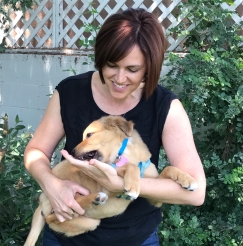
Excellent article& advice. Thank you, Dr Weeth!
LikeLike
Dr Weeth, I’m getting a new puppy, in a few weeks, from a self-described holistic breeder. I’m flabbergasted by the amount of dietary and supplemental recommendations included in the take home information. One thing I have not heard of before (until I did a Google search) is food grade diatomaceous earth being added to puppy mush to prevent worms. The breeder does not want us to get the puppies wormed, i.e. putting toxins into the puppy as a preventative, if they do not have any worms, and ‘recommends using the FGDE first. Does this make sense to you? Thank you for providing your informative blogs.
LikeLike
Hi Mandolina,
Ah, breeders… some are fantastic and others have opinions and practices that are not always grounded in science. I wouldn’t recommend giving a puppy (or adult dog for that matter) diatomaceous earth (DE) or routine deworming without evidence of intestinal parasites but for different reasons.
Diatomaceous earth is a silica-based powder made from diatoms (microscopic algae that live in the ocean) and has a lot of health claims but not of them based in science or controlled clinical studies. But what DE can do is increase the risk of silica bladder stones, interfere with absorption of essential nutrients in the diets creating potentially harmful nutritional deficiencies, and act as an abrasive in the gastrointestinal tract. The abrasive effect is I think how DE advocate claim it works to clear parasites, but it is also how it can work to cause stomach and intestinal ulcerations. All of those seem like pretty “toxic” effects to me.
New puppies (whether they are rescued from a shelter or purchased from a breeder) should have routine fecal ova and parasite checks when they enter a new home. Giving a deworming medication to a dog that doesn’t need it is not harmful, just not necessary, and I am not an advocate for unnecessary treatments unless you have a high suspicion of a problem and just can’t prove it. Ova and parasites can be shed intermittently in stool so if I had a puppy that was having diarrhea but had “clean” fecal exams or if the puppy’s stool was normal but another dog in the house was diagnosed with GI parasites (with or without normal fecal exams in the puppy) I would deworm the puppy with proven medical treatments.
I would defer to your veterinarian for medical recommendations on the new puppy, though chances are if the breeder doesn’t believe in conventional (i.e., proven therapeutics) for her dogs I think your new puppy may just need to be dewormed. 😉
Thanks for reading and best wishes with the soon-to-be new addition!
LikeLike
What happened to your cat with the kidney problem? It doesn’t seem like you ever posted an update.
LikeLike
Hi Becky,
Unfortunately, the outcome was not good. Our younger cat Cosette who I wrote about was diagnosed with a rare (for cats) cancer that was affecting her kidneys and it was inoperable. Cancer is the worst. 😦
Lisa
LikeLike
Pingback: 66 Dilated Cardiomyopathy associated with Grain Free Diets – Dr Pam's Vet Blog
Hello Sir
Thanks for sharing the great information. I read this blog and must say the information that you shared in this blog is really very useful. Please post more blog related to ”online website for pets”. It would be really helpful for those people who want to share their best memories with pets.
Thank You.
LikeLike